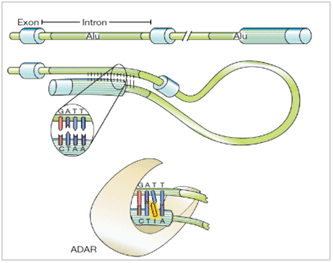RNA editing and its possible contribution to the social organization of bumblebee (Bombus terrestris) colonies
Studies with various organisms have revealed variation between genomic (DNA) and corresponding RNA sequences which are generated by enzymes that edit the RNA. Adenosine Deaminase Acting on RNA (ADAR) mediated RNA editing (“A-to-I RNA editing”) is the most common form of RNA editing in insects. A-to-I RNA editing is specifically ubiquitous in the nervous system in which it may change neuronal processes and behavior. We test the hypothesis that A-to-I RNA editing regulates social behavior in the bumblebee Bombus terrestris. Our initial analyses indicate that many coding and non-coding brain transcripts are edited, including recoding of ion channels, transporters, and receptors that are predicted to affect brain function and behavior. Editing levels were influenced by task performance, but not by dominance or juvenile hormone. ADAR expression was significantly enriched in the brain, and was not regulated by queen presence, task performance, or dominance. Our results show that A-to-I RNA editing is ubiquitous in bumblebees and may contribute to socially regulated behavioral plasticity. |

RNA editing (credit: Erez Levanon's lab page)
In collaboration with Gene Robinson and Mark Band (UIUC), Yehuda Ben Shahar (Wash U), and Erez Levanon (Bar Ilan U). Supported by the BSF-NSF and BARD.
Publications
- Porath HT, Hazan E, Shpigler H, Cohen M, Band M, Ben Shahar Y, Levanon EY, Eisenberg E, Bloch G (2019) RNA editing is abundant and correlates with task performance in a social bumblebee. Nature Communications 10: 1605; DOI: 10.1038/s41467-019-09543-w

